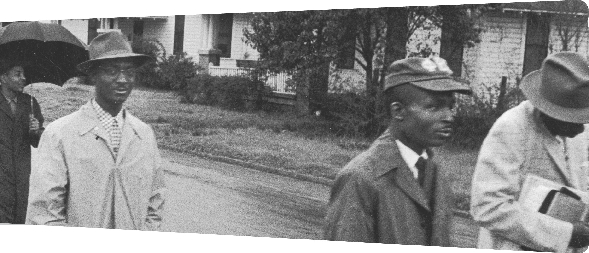
Thousands of African Americans walked to work during the Montgomery bus boycott.
whites-only lunch counter in a Woolworth’s store and politely ordered coffee and donuts. The students were refused service. At that time, many department stores across the country had lunch counters, but most Southern lunch counters did not serve food to African Americans. Blacks were free to shop at the stores but could not eat there.
To protest, the four students sat at the counter for the rest of the afternoon. They returned the next day. This time, twenty more students came with them and each day, more people—both black and white—joined the “sit-in.” By Saturday, hundreds jammed the lunch counters.
The events in Greensboro became news. At first, white business leaders refused to bend to the protest. But then black citizens set up a boycott of local stores. Stores began losing money and finally, on July 25, 1960, the first black person was served lunch at Woolworth’s.
During the next eighteen months, thousands of people staged sit-ins all over the South. Most of those taking part were black students. Both Martin Luther King, Jr., and Thurgood Marshall supported these nonviolent protests. African Americans had found a new and powerful way to be heard.